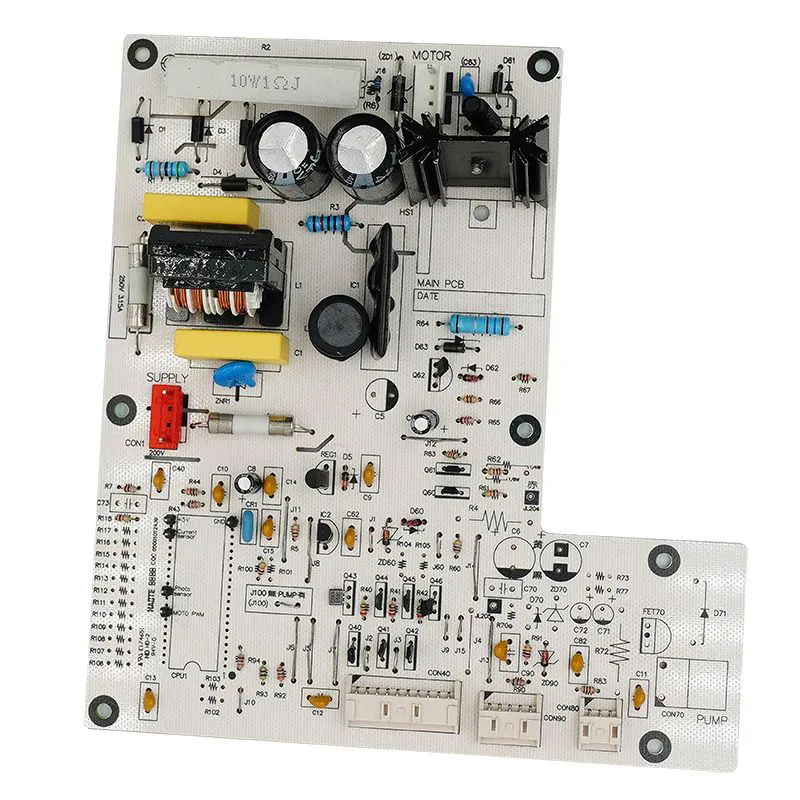The Role of Water Dispenser PCBA in Modern Water Dispensing Systems
2024-09-04
In today’s technologically advanced world, the efficiency and functionality of appliances are significantly enhanced by sophisticated electronic components. Among these, the Water Dispenser PCBA (Printed Circuit Board Assembly) plays a crucial role in modern water dispensing systems. This blog explores what a Water Dispenser PCBA is, its key features, benefits, and how it contributes to the functionality of water dispensers.
What is a Water Dispenser PCBA?
A Water Dispenser PCBA is a printed circuit board assembly used in water dispensing systems to control and manage various functions of the appliance. The PCBA is the electronic heart of the water dispenser, enabling it to perform tasks such as heating, cooling, and dispensing water efficiently. It integrates various electronic components, including microcontrollers, sensors, and relays, onto a single board to streamline the appliance's operation.
Key Features of Water Dispenser PCBAs
1. Microcontroller Integration
The PCBA typically includes a microcontroller, which acts as the brain of the water dispenser. This microcontroller processes inputs from sensors and user controls, executing commands to regulate water temperature, flow, and other functions.
2. Sensor Connectivity
Water dispensers are equipped with various sensors to monitor water levels, temperatures, and operational status. The PCBA connects and interfaces with these sensors, ensuring accurate data collection and response to changing conditions.
3. Relay and Control Circuits
Relays and control circuits on the PCBA manage the electrical power supplied to different components of the water dispenser, such as heating elements and pumps. These circuits ensure that the appliance operates smoothly and safely.
4. User Interface Integration
The PCBA often includes connections for user interface components such as buttons, displays, and LED indicators. This integration allows users to interact with the water dispenser, select settings, and receive feedback on the appliance’s status.
5. Communication Interfaces
Many modern water dispensers feature communication interfaces on their PCBAs, enabling connectivity with other devices or systems. This feature allows for remote control, diagnostics, and integration with smart home systems.
Benefits of Water Dispenser PCBAs
1. Enhanced Functionality
The PCBA enhances the functionality of water dispensers by enabling precise control over heating, cooling, and dispensing processes. It allows the appliance to deliver water at the desired temperature and flow rate, improving user convenience.
2. Improved Reliability
By consolidating various electronic components onto a single board, the PCBA improves the reliability and durability of the water dispenser. Fewer connections and components reduce the likelihood of faults and ensure consistent performance.
3. Energy Efficiency
Modern PCBAs are designed to optimize energy consumption by efficiently managing power distribution to different parts of the water dispenser. This efficiency helps reduce operational costs and environmental impact.
4. User-Friendly Operation
The integration of user interface components on the PCBA allows for intuitive and user-friendly operation. Users can easily control settings, monitor performance, and receive notifications about the appliance’s status.
5. Advanced Features
With the incorporation of communication interfaces and sensors, the PCBA enables advanced features such as remote control, smart home integration, and real-time diagnostics. These features enhance the overall user experience and provide additional convenience.
How Water Dispenser PCBAs Enhance Water Dispenser Systems
1. Temperature Control
The PCBA regulates the heating and cooling elements in the water dispenser to maintain the desired water temperature. By accurately controlling these elements, the PCBA ensures that hot and cold water is available as needed.
2. Flow Management
PCBAs manage the flow of water through the dispenser, ensuring a steady and consistent output. The control circuits on the PCBA adjust the flow rate based on user settings and operational conditions.
3. Safety Features
Safety is a critical aspect of water dispenser design. The PCBA incorporates safety features such as over-temperature protection and leak detection to prevent accidents and ensure safe operation.
4. Efficiency Optimization
By managing power distribution and sensor inputs, the PCBA optimizes the efficiency of the water dispenser. This optimization helps reduce energy consumption and prolong the lifespan of the appliance.
5. Diagnostics and Maintenance
Many PCBAs include diagnostic features that allow for troubleshooting and maintenance. These features can identify issues with the water dispenser and provide insights into potential repairs or adjustments.
Applications of Water Dispenser PCBAs
1. Home Water Dispensers
In residential settings, water dispenser PCBAs enhance the functionality and convenience of home water dispensers, providing users with reliable access to hot and cold water.
2. Office Water Dispensers
Office water dispensers benefit from PCBA technology by offering efficient and consistent water dispensing for employees. The advanced features of PCBAs contribute to a positive work environment.
3. Commercial and Industrial Water Dispensers
In commercial and industrial environments, water dispenser PCBAs ensure the efficient operation of high-capacity dispensers used in cafeterias, factories, and public facilities. Their durability and reliability are crucial for these applications.
4. Medical and Laboratory Water Dispensers
Water dispensers used in medical and laboratory settings require precise temperature control and reliable operation. PCBAs provide the necessary functionality and accuracy for these specialized applications.
Conclusion
Water Dispenser PCBAs are integral to the operation and efficiency of modern water dispensing systems. By integrating electronic components onto a single board, PCBAs enhance functionality, reliability, and user experience. From regulating temperature and flow to enabling advanced features and diagnostics, the PCBA plays a crucial role in delivering high-performance water dispensers. As technology continues to advance, the capabilities of water dispenser PCBAs will likely evolve, offering even more innovative solutions for ensuring the quality and convenience of water dispensing.



